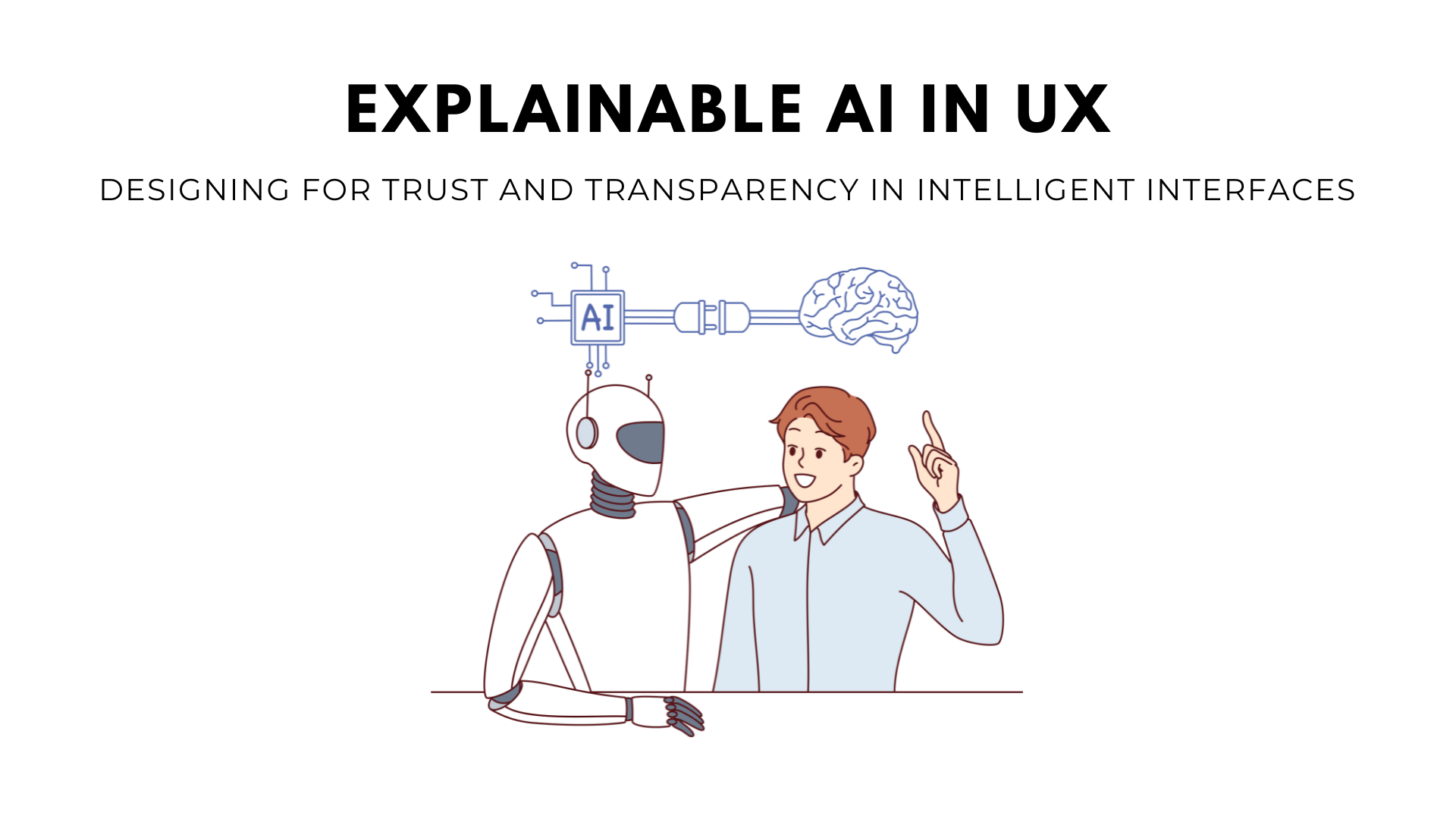Explainable AI in UX
Designing for Trust and Transparency in Intelligent Interfaces

As artificial intelligence becomes increasingly integrated into digital products—from recommendation systems and finance tools to healthcare apps—one critical challenge stands out: trust. Users interact with intelligent systems capable of making complex decisions, yet the rationale behind those decisions is often unclear.
This lack of transparency has given rise to a vital area in modern product design and development: Explainable AI (XAI). More than just a technical necessity, XAI plays a foundational role in shaping user experience (UX). As AI-driven interfaces become commonplace, the need to design with clarity, fairness, and user confidence at the core has never been more important.
What is Explainable AI?
Explainable AI (XAI) refers to artificial intelligence systems that provide human-understandable justifications for their decisions or predictions. Unlike traditional "black-box" models—where even developers may not fully understand why a model behaves a certain way—XAI seeks to bring transparency and interpretability to AI processes.
In practical terms, XAI allows users to ask questions like: “Why was my loan application rejected?” “Why did the system recommend this product?” “Why was this patient flagged as high-risk?”
Explainability bridges the gap between human reasoning and machine decision-making. In the context of UX, it helps ensure that AI does not remain an intimidating or mysterious force within a product but instead becomes a collaborative, trustworthy partner in the user journey.
Why Explainability Matters in User Experience
At its core, user experience is about clarity, predictability, and control. When users don’t understand how a system works—especially one that influences important outcomes—they may feel confused, powerless, or even distrustful.
Consider the implications of opaque AI in real-world scenarios: A job applicant is rejected by an AI screening tool with no explanation. A health app flags a user as high-risk but offers no insight into contributing factors. An e-commerce site recommends irrelevant products without context.
In each of these cases, the lack of explainability diminishes the user’s experience. Transparency, on the other hand, fosters trust, engagement, and satisfaction.
Key Benefits of Explainable AI in UX
- Enhanced Trust and Transparency: Explanations help users understand how and why decisions are made, increasing confidence in AI systems.
- Improved Decision-Making: By revealing the reasoning behind suggestions or actions, users are empowered to make more informed choices.
- Accessibility and Inclusivity: Clear explanations ensure that users with different backgrounds and skill levels can interact meaningfully with AI-powered systems.
- Ethical and Responsible Design: XAI can help detect and correct algorithmic bias, making digital products more fair and accountable.
Real-World Examples: Explainability in Action
E-commerce platforms often use phrasing such as “Recommended based on your browsing history” to clarify AI-powered suggestions. Streaming services like Spotify and Netflix offer explainability features with “Because you watched…” messages, improving personalization without losing user trust. Healthcare AI tools visually highlight areas of medical images to support diagnoses, providing physicians with transparent reasoning rather than opaque outcomes.
Challenges in Designing Explainable Interfaces
Integrating explainability into UX is not without its difficulties:
- Balancing simplicity with accuracy: Overly technical explanations can confuse users, while oversimplified ones may misrepresent reality.
- Cognitive load: Poorly designed explanations can overwhelm users or distract from primary tasks.
- Design constraints: Limited screen space and information hierarchy make it challenging to integrate explanations seamlessly.
- Model limitations: Not all AI models are inherently interpretable, especially deep learning systems.
UX Strategies for Integrating Explainable AI
- Progressive Disclosure: Present minimal, high-level reasoning initially, with optional expansion for users who want deeper insights.
- Visual Cues: Use design elements like highlights, graphs, or heatmaps to visually explain AI behavior.
- Plain Language: Translate technical model outputs into user-friendly terms. Avoid jargon and use familiar vocabulary to explain decisions.
- Feedback Loops: Allow users to correct or question AI decisions to improve both transparency and model accuracy over time.
Conclusion
Explainable AI marks a crucial intersection between artificial intelligence and human-centered design. By making machine decisions understandable, designers and developers can create products that are not only intelligent but also transparent, trustworthy, and user-friendly.
In an age where algorithms influence critical aspects of daily life—from finances and health to education and entertainment—explainability is no longer optional. It is essential to ethical and effective UX.
Follow us on @control_z_studios for more UX insights.
Want more UX insights? Explore all our blogs for in-depth reads.